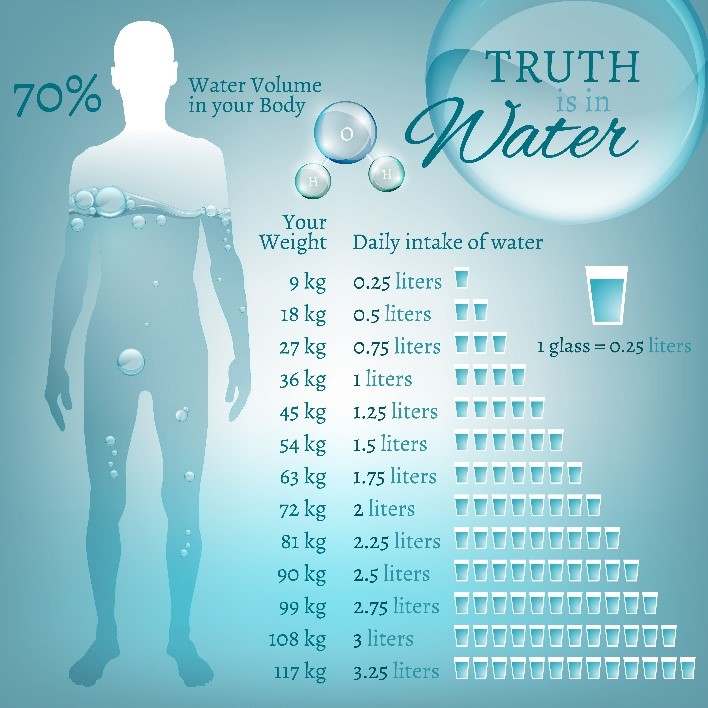
For lactating women adequate water intakes of about 700 mL/day above the AIs of non-lactating women of the same age are derived.
Water consumption per day plus#
For pregnant women the same water intake as in non-pregnant women plus an increase in proportion to the increase in energy intake (300 mL/day) is proposed. The same AIs as for adults are defined for the elderly. Worldwide, agriculture accounts for 70 of all water consumption, compared to 20 for industry and 10 for domestic use. Available data for adults permit the definition of AIs as 2.0 L/day (P 95 3.1 L) for females and 2.5 L/day (P95 4.0 L) for males. Adolescents of 14 years and older are considered as adults with respect to adequate water intake. In 2010 India was the world’s largest agricultural water consumer at nearly 700 billion m 3 per year. AIs of water for children are estimated to be 1300 mL/day for boys and girls 2-3 years of age 1600 mL/day for boys and girls 4-8 years of age 2100 mL/day for boys 9-13 years of age 1900 mL/day for girls 9-13 years of age. For the second year of life an adequate total water intake of 1100 1200 mL/day is defined by interpolation, as intake data are not available. For infants 6-12 months of age a total water intake of 800 1000 mL/day is considered adequate. AIs for infants in the first half of the first year of life are estimated to be 100-190 mL/kg per day. The reference values for total water intake include water from drinking water, beverages of all kind, and from food moisture and only apply to conditions of moderate environmental temperature and moderate physical activity levels (PAL 1.6). Adequate Intakes (AI) have been defined derived from a combination of observed intakes in population groups with desirable osmolarity values of urine and desirable water volumes per energy unit consumed. This Opinion of the EFSA Panel on Dietetic Products, Nutrition, and Allergies (NDA) deals with the setting of dietary reference values for water for specific age groups. Competent organisations in Member States.It includes the metered and estimated residential, commercial, and industrial consumption. The chart below shows the annual trend in billed per capita water consumption since 1990.īilled per capita water consumption is water sold. If you are interested in slowing the flow please visit our water conservation page. That means a family of four would use around 10,000. The average American uses around 82 gallons per day per person in the household. Pull out your water bill and follow our steps to learn more about it. Declining water use allows Winnipeg to maintain our adequate water supply and can eliminate or defer costly capital water infrastructure expansion projects. An easy to way to understand individual water use is to look at your water billnot just the amount due, but how much water you used. toilets and clothes washers), public awareness of water conservation, and the adoption of new government regulation. Winnipeg attributes the overall reduction in per capita water consumption to a variety of factors including the innovation in water efficient technology (i.e. Based on 2015 data from Environment Canada and Statistics Canada, Winnipeg's residential per capita water consumption is 31 percent lower than the Canadian average. Declining per capita water use is not unique to Winnipeg as a similar trend has been noticed across Canada.

Since 1990, Winnipeg's residential, commercial and industrial customers have collectively reduced their per capita water consumption by 44 percent. Winnipeg's billed water use is measured as the average amount of water consumed in litres per person (per capita) per day (L/c/d).


 0 kommentar(er)
0 kommentar(er)
